SUMMARY
This is AI generated summarization, which may have errors. For context, always refer to the full article.
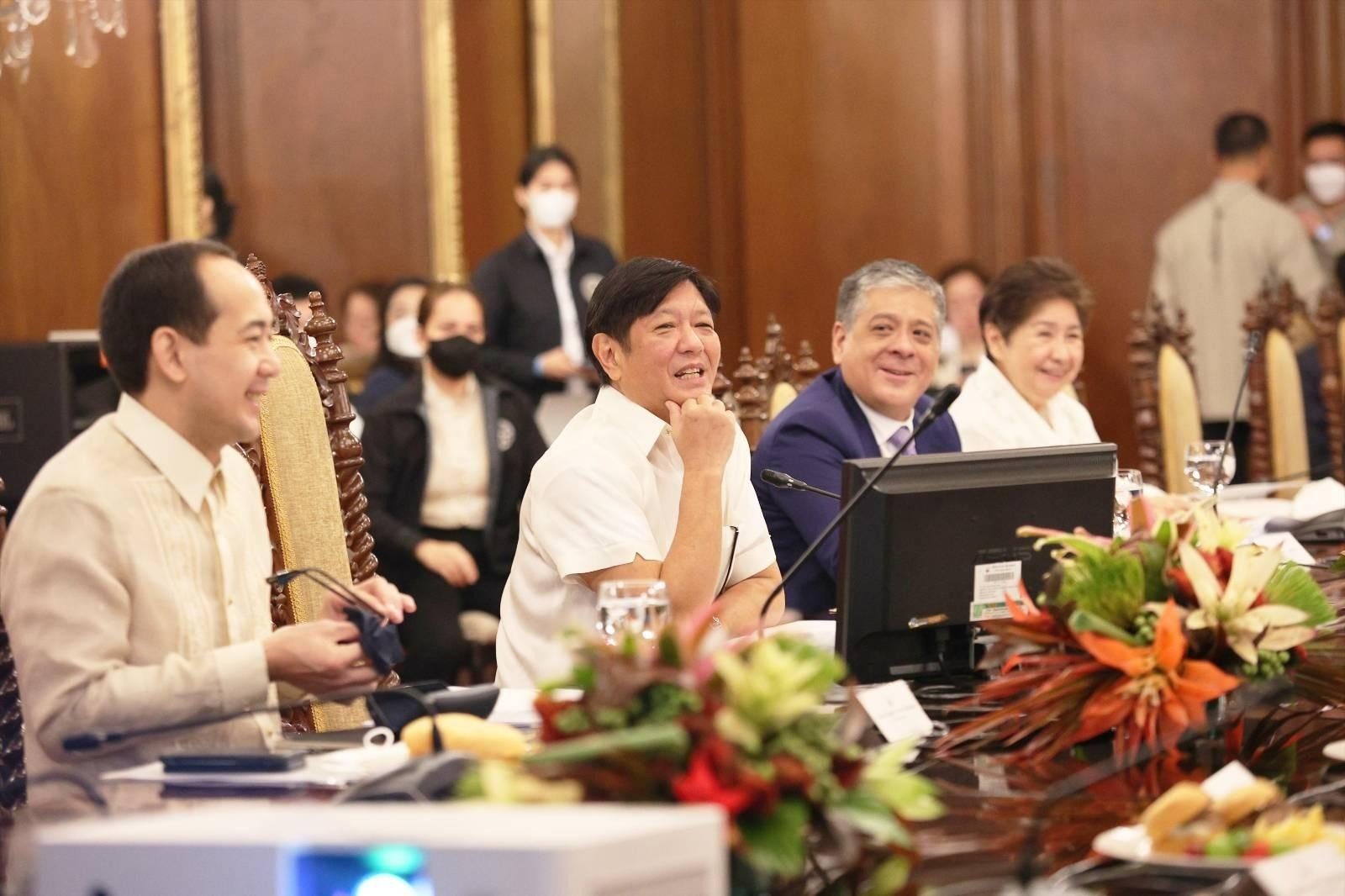
MANILA, Philippines – In his first speech as the 17th President of the Republic, Ferdinand Marcos Jr. made a promise: He’d “get it done.”
Touching – but not expounding on – his father, the late strongman Ferdinand Marcos’ memory, the second Marcos president added: “I once knew a man who saw what little had been achieved since independence, in a land of people with the greatest potential for achievement; and yet they were poor. But he got it done; sometimes with the needed support; sometimes without. So will it be with his son. You will get no excuses from me.”
There is a lot on the line for President Marcos, the first majority-elected President in the post-EDSA Revolution era.
First, the huge mandate for his win also means great expectations from a majority of Filipinos.
Second, Marcos inherited a Philippines wildly different from his predecessor culturally but more urgently, economically. While the pandemic situation is not as dire as it was in 2020, the effects of over a year of lockdowns and other external factors – Russia’s war on Ukraine, among other things – has meant the economic crisis is top of mind for all Filipinos.
Finally, there’s the legacy that’s both been a boon and bane for one Bongbong Marcos Jr. That he enters Malacañang as the son of the late dictator means he’s always had a steady army of loyalists but also that there’s a chunk of a population who – and rightly so – despair and reject the second rise of the Marcos name.
How did the new president do in his first week?
Initial, ongoing delays
Even as the pomp and pageantry of the inauguration grabbed most headlines on June 30, there were things that were glaringly not as well-ironed out. Upon assuming the post as the new president of the Philippines, Marcos was without key officials in his Cabinet: a foreign affairs secretary at a time when the global order continues to shift, a health secretary in the middle of a pandemic, an energy chief during an oil crisis, and chiefs of the science and technology, housing, and environment portfolios.
It would not be until July 1 when the Palace would announce that Marcos had finally picked a new Secretary of Foreign Affairs: the veteran diplomat Enrique Manalo. He was considered among Marcos’ best picks in his Cabinet.
Rappler news editor Paterno Esmaquel III noted that Manalo’s appointed was “significant” because “career diplomats, who underwent grueling exams and mastered diplomacy – a complex field that requires knowledge of history, politics, and international relations – have always wanted one of their own to lead the foreign service.” More recent picks to be the country’s chief diplomat alongside the President included businessmen and politicians.
Marcos also did not convene his Cabinet until Tuesday, July 5 – and still, without heads of the health, energy, science and technology, environment, and housing portfolios, among others.
Quick too was Marcos in restructuring the bureaucracy as he deemed fit. Executive Orders 1 and 2 focused on abolishing certain agencies, rearranging the command structure, and streamlining staff support systems in the Palace.
Most notable was his decision to abolish the Presidential Anti-Corruption Commission, a (re)creation of former president Rodrigo Duterte.
“[The PACC] is not in line with streamlining. First of all, its nature is investigative, which can also be conducted by the Office of the Ombudsman,” Press Secretary Trixie Cruz-Angeles would go on to explain in a press briefing on July 8, or more than a week after those EOs were released.

Hitting the ground running
Missing officials aside, the Marcos administration was clear on its priorities, even ahead of its first Cabinet meeting. The President himself had chosen to take over the agriculture portfolio – a risky and bold choice on his part, especially because of the gut issue that is hunger.
Food insecurity has always been an issue in the Philippines and rising food costs have exacerbated that problem. The President and concurrent agriculture chief simplified his department’s mission: “But it really is just to ensure food supply in the Philippines at a price that is actually affordable.”
The first Cabinet meeting also spelled out his administration’s main priorities: getting the economy back on track, streamlining government, and going back to in-person classes.
In his first Cabinet meeting on July 5, the first few minutes of which streamed on public broadcaster RTVM, Marcos declared that the economic team was going to brief the entire Cabinet before anything else. In a press conference the same day, Marcos said next to the economy and streamlining, they tackled the long-awaited return to face-to-face classes, an effort that would be spearheaded by the Education department under Vice President Sara Duterte.
Most of Marcos’ discussion on the pandemic and on transportation – two other major issues in the Philippines – revolved around the eventual return to in-person classes.
Absent a health chief, Marcos met with officials of the health department, the Inter-Agency Task Force for the Management of Emerging Infectious Diseases, and Philhealth to discuss vaccination plans. He also met with energy officials and the “Private Sector Advisory Council” for agriculture.
On July 6, Marcos received China’s State Councilor and Foreign Minister Wang Yi at Malacañang – the first official visit under the Marcos administration. The new president had earlier met with top diplomats and different countries’ heads of delegation for his inauguration. Wang
On July 8, Malacañang hosted a gathering of mayors and governors to discuss the administration’s vaccine roll out plan in connection with the education department’s plans. Marcos himself was not able to attend that gathering in person, but we’ll get into that a little later.
Malacañang parties?
If by Monday and Tuesday, government programs and proposals were at top-of-mind, the weekend prior, it was images of at least two parties in Malacañang Palace that captivated social media.
Images and details from the Inaugural Ball made their way to social media – videos of guests dancing and celebrating in Malacañang, and a souvenir medallion that bore the image of Ferdinand Romauldez Marcos Jr – stirred controversy online.
It did not help that on July 2, the Palace again played host to the birthday of former first lady Imelda Marcos, the President’s mother and half of the so-called conjugal dictatorship during the first Marcos presidency.
Press Secretary Trixie Cruz-Angeles downplayed criticism of the Inaugural Ball, calling it “a joyful but simple and traditional occasion.” Senator Imee Marcos, the eldest sister of the President, said their gathering for Imelda Marcos was merely a “very simple merienda with a small recital of old friends and scholars.”
Addressing concerns that public funds would be used in private family functions, Angeles added: “We assure you that the President will adhere to law and so that is the presumption. We will… The President does – no directive in excess of anything that is written in the law.”
The positive (test)
That Marcos had to skip the Malacañang-hosted gathering of local chief executives wasn’t a matter of choice but government protocol. Early on July 8, Friday, Angeles announced that the Chief Executive had tested positive for COVID-19 during an antigen test. A subsequent RT-PCR examination confirmed that he had been reinfected with the coronavirus.
All week, Marcos had been meeting with officials, administering oaths, and engaging in events, sans mask in several instances. His son, newbie Ilocos Norte 1st District Representative Ferdinand Alexander Marcos, had tested negative for COVID-19. The rest of the First Family – wife Liza and sons Simon and Vincent – were out of town, and had not been exposed to the President, according to Angeles.
Testing positive for COVID-19 also meant Marcos had to skip at least one major event: the US embassy in the Philippines’ Independence Day celebration.
On Sunday, July 10, the Palace, quoting the President’s physician, said Marcos “is doing well and very much in stable condition.” Marcos has been isolating since testing positive for COVID-19, following protocols set by the health department.
But even as he was isolating due to COVID-19, the President opened up the possibility of making mask-wearing optional should the conditions be ideal.
“So let us return to the idea of what we did last year na magkaroon ulit ng vaccine rollout. Gawin na natin ito para makatiyak na tayo. At pagka maging matagumpay ang ating booster rollout ay makikita naman natin siguro puwede na nating ibaba ang mga alert level, puwede na nating gawing optional ang mask,” he said via teleconference during the July 8 meeting with local chief executives.
(So let us return to the idea of what we did last year, having a vaccine rollout. Let’s do this so we’re sure. If our booster rollout is successful, we can consider lowering alert levels and making masking optional.) – Rappler.com
Add a comment
How does this make you feel?


![[Time Trowel] Evolution and the sneakiness of COVID](https://www.rappler.com/tachyon/2024/02/tl-evolution-covid.jpg?resize=257%2C257&crop=455px%2C0px%2C1080px%2C1080px)


![[In This Economy] Is the Philippines quietly getting richer?](https://www.rappler.com/tachyon/2024/04/20240426-Philippines-quietly-getting-richer.jpg?resize=257%2C257&crop=194px%2C0px%2C720px%2C720px)
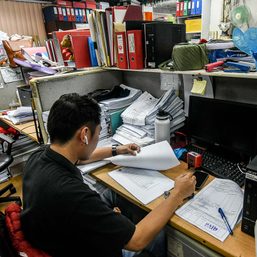
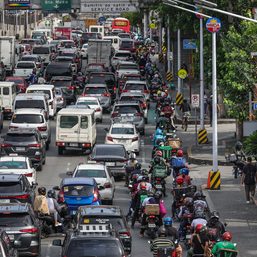
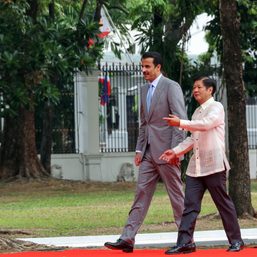
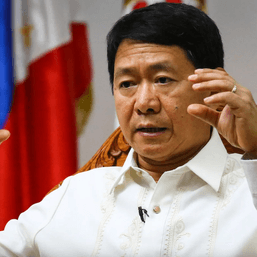
There are no comments yet. Add your comment to start the conversation.